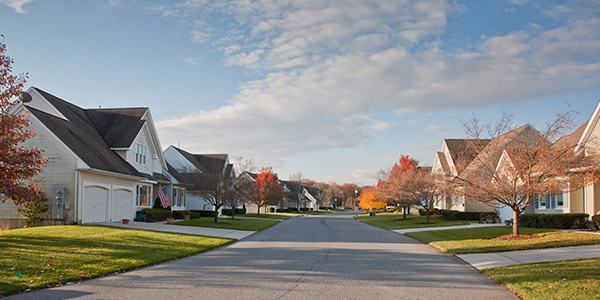Homebuyers
FHA Loan Limits 2024: Updated Guidelines & Requirements
March 22, 2024
The Federal Housing Administration (FHA) has unveiled its loan limit updates for 2024, bringing significant changes that will impact your borrowing power. With an average increase of 5.56% over last year, these revised FHA loan limits offer fresh opportunities for aspiring homeowners and those seeking to refinance their mortgages. Dive into this comprehensive guide as we explore the details of the new FHA loan limits, highlighting key factors, requirements, and maximum loan amounts. Don't miss out on this chance to empower your homeownership journey – discover how much you can afford and turn your dream home into a reality!
FHA Loan Limit Changes: What You Need to Know
The Federal Housing Administration (FHA) unveiled its loan limit updates for 2024, bringing significant changes that will impact homebuyers and the housing market. These revised limits, which went into effect on January 1, 2024, offer increased borrowing power and expanded opportunities for aspiring homeowners and those looking to refinance their mortgages.
For reference, the FHA loan limit is the maximum amount the FHA will insure on a mortgage loan. These limits vary based on the county and the type of property being financed. For 2024, the FHA floor loan limit for single-family homes is $498,257. This single-home lending amount covers most areas in the United States (click here to check your area's loan limit). On the other hand, the FHA ceiling loan limit for single-family homes has been increased to $1,149,825. This represents the highest amount a borrower can obtain through the FHA loan program and applies to high-cost areas.
The FHA loan limits play a crucial role in the housing market by making homeownership more accessible to a broader range of borrowers. The FHA supports first-time homebuyers, low-to-moderate-income families, and individuals in overlooked communities by providing affordable financing options. These revised limits will enable more individuals and families to achieve homeownership goals and contribute to a more vibrant housing market.
Factors Influencing FHA Loan Limits in 2024
The FHA loan limits for 2024 are influenced by various factors that reflect the overall dynamics of the housing market and economic conditions. Here are some key factors that shape FHA loan limits for 2024:
- Housing Price Trends: Median home prices are the foundation for determining FHA loan limits. As the median home price in a county increases, so does the corresponding FHA loan limit. The steady rise in housing prices nationwide has contributed to the overall increase in FHA loan limits for 2024.
- Cost of Living in High-Cost Areas: The FHA recognizes the variations in the cost of living across different regions. The FHA sets higher loan limits in high-cost areas with higher housing prices to ensure borrowers have sufficient purchasing power. These adjustments aim to make homeownership more accessible in expensive markets.
- Type of Property: The FHA sets different loan limits for single-family homes versus multi-family units. This variation acknowledges the differing costs and needs associated with purchasing larger properties that can accommodate multiple families.
FHA Loan Requirements
In addition to the loan limits, the FHA also has specific requirements that borrowers must meet to qualify for an FHA loan. These requirements include:
- Minimum credit score: The minimum credit score required for an FHA loan is 580. Borrowers with credit scores below 580 may still be eligible for an FHA loan if they can make a larger down payment.
- Down payment: The minimum down payment required for an FHA loan is 3.5% of the purchase price. Borrowers with credit scores below 580 may need to make a larger down payment.
- Debt-to-income ratio: The maximum debt-to-income ratio (DTI) allowed for an FHA loan is 43%. The DTI ratio is calculated by dividing the borrower's total monthly debt payments by their gross monthly income.
- Primary residence requirement: The property financed with an FHA loan must be the borrower's primary residence. Investment properties and vacation homes are not eligible for FHA financing.
Borrowers who meet these requirements may be eligible for an FHA loan. FHA loans offer competitive interest rates and flexible underwriting guidelines, making them a good option for first-time homebuyers and borrowers with less-than-perfect credit.
FHA Maximum Loan Amounts
The FHA maximum loan amounts for 2024 vary depending on the county and property type. The maximum amount for a single-family home in a low-cost area is $498,257, while the maximum amount for a single-family home in a high-cost area is $1,149,825. The FHA maximum loan amounts for other property types in low-cost areas include $637,950 for a two-unit home, $771,125 for a three-unit home, and $958,350 for a four-unit home. For high-cost areas, the FHA maximum loan amounts for other property types include $1,472,250 for a two-unit home, $1,779,525 for a three-unit home, and $2,211,600 for a four-unit home.
Borrowers considering an FHA loan should be aware of the maximum loan amounts for their county and property type. They should also know the other FHA requirements, such as the minimum credit score and down payment. By understanding the FHA loan requirements, borrowers can determine if they are eligible for an FHA loan and how much they can borrow.
FHA Streamline Refinance Limits
This section will discuss the FHA Streamline Refinance program, which is designed to make refinancing more accessible and less burdensome for those who already have an FHA loan. Streamline Refinance aims to lower your interest rate and monthly payments on your existing FHA mortgage with a simplified and expedited process. Key aspects include not requiring an income verification or a home appraisal and minimal paperwork.
The FHA Streamline Refinance program has specific loan limits that borrowers must adhere to. The original FHA loan amount and the property's current appraised value determine these limits. The maximum loan amount for a Streamline Refinance cannot exceed the original FHA loan amount, and it must also be within the current FHA loan limits for the county and property type.
For instance, if you have an existing FHA loan of $300,000 and the current appraised value of your home is $350,000, the maximum loan amount for your Streamline Refinance would be $300,000, as it cannot exceed the original FHA loan amount. Additionally, this amount must fall within the FHA loan limits for your county and property type for 2024.
It's important to note that the FHA Streamline Refinance program may only be suitable for some. Specific eligibility requirements must be met, such as having a satisfactory payment history on their existing FHA loan and being current on all mortgage payments. Additionally, the interest rate on the new Streamline Refinance loan must be lower than the interest rate on the existing FHA loan.
If you are considering an FHA Streamline Refinance, it is advisable to consult with a knowledgeable lender or mortgage professional. They can assess your specific situation, determine if the program is right for you, guide you through the application process, and make sure that you meet all the requirements and limits.
How Much House Can I Afford?
Determining how much you can borrow for an FHA loan is key before starting your homeownership journey. Several factors play a role in determining your affordability, and understanding these factors will empower you to make informed decisions.
We have developed a user-friendly affordability calculator to simplify the process and provide you with a personalized estimate. By inputting your relevant financial information, this tool will calculate your estimated borrowing power and provide valuable insights into your loan options. Access our affordability calculator by clicking here, and take the first step towards realizing your homeownership dreams.
FAQs
Are FHA Loans Assumable?
Yes, FHA loans are assumable, meaning the mortgage can be transferred from the home seller to the buyer with the loan terms remaining unchanged. This feature can be desirable in a rising interest-rate market, as it allows the buyer to take advantage of lower interest rates that the seller had locked in. However, the buyer must meet specific FHA lending criteria to assume the loan. For more detailed information, refer to our FHA Loan Assumable Post.
How Long Do I Have to Be Employed to Qualify for an FHA Loan?
To qualify for an FHA loan, borrowers typically need a steady employment history for the last two years. The FHA looks for consistency in income and employment to make sure borrowers can repay the loan. There may be exceptions for recent graduates entering the workforce or individuals who have changed jobs within the same field if they can prove job stability and reliability of income. Discussing your employment situation with a lender is important to understand how it affects your qualifications.
Does the FHA Loan Cover Closing Costs?
The FHA does not directly cover closing costs. However, FHA loans allow sellers, lenders, and builders to contribute up to 6% of the sales price toward the buyer's closing costs. These contributions can cover appraisal fees, title insurance, and other expenses associated with closing a mortgage. It's essential to negotiate these contributions during the buying process.
Remember, every borrower's situation is unique, and it's important to consult with a qualified mortgage professional to get the most accurate and personalized advice for your specific circumstances.







 Smart Moves Start Here.
Smart Moves Start Here.